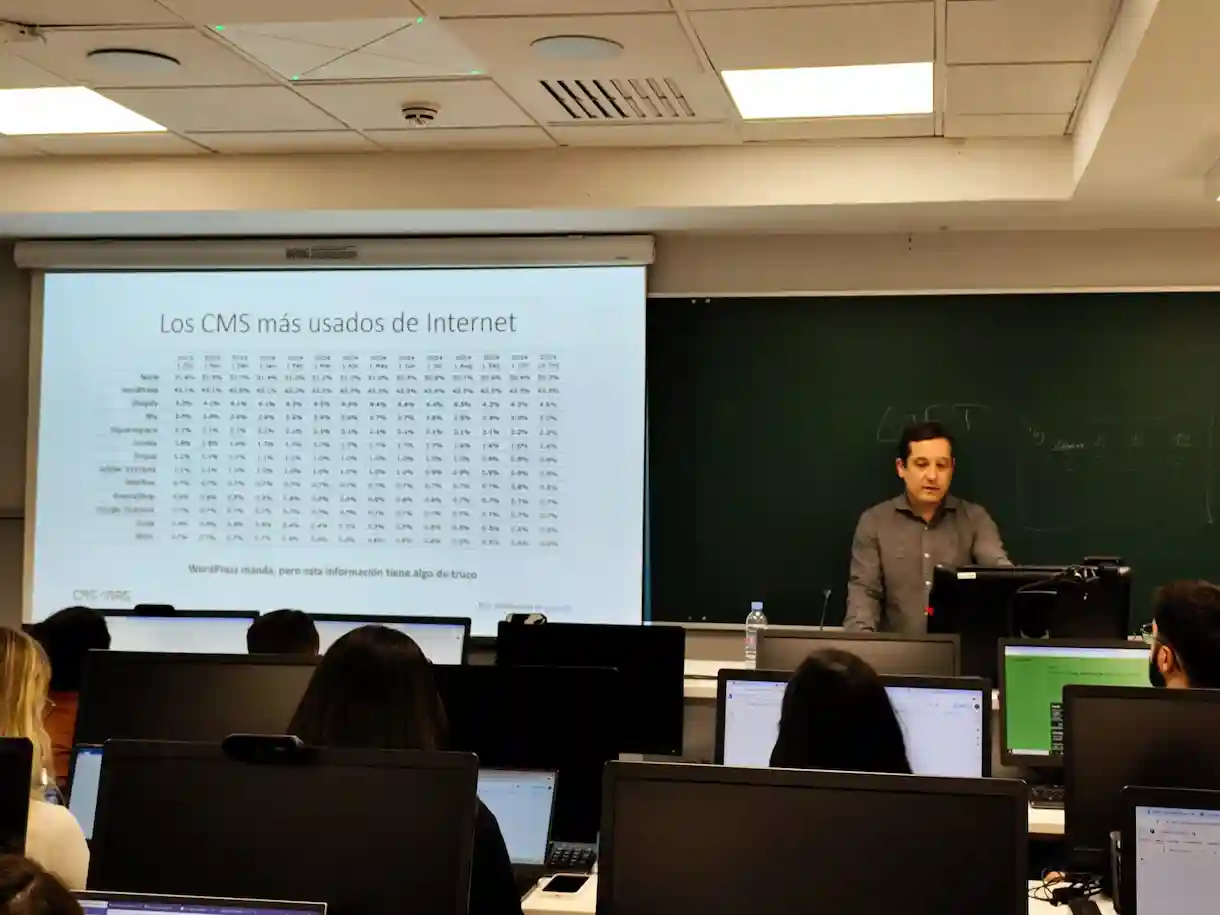Yesterday, I had the honor of once again—three years in a row now—giving a class on web content management systems to the students of the Master’s Program in Digital Journalism and New Professional Profiles at Rey Juan Carlos University (Madrid). I couldn’t be happier with the experience, the students, and, of course, the excellent teaching staff.
Here’s a brief summary of what I cover during the two hours they give me. First, I introduce the topic by going over all the CMS platforms I’ve used since I started working as an online journalist back when the Y2K bug was threatening our lives. In this section, I present my definition of a CMS, the different types of CMS, and some general information.
Then, I teach them my own method for selecting a CMS. It usually involves two phases: an internal study to get things in order on the client side, followed by a market analysis.
In this part, I also like to discuss the three main options available: building your own CMS, using open-source software, or (this is the option I most often recommend) choosing a third-party solution with mature software that has been well-tested, even by major media outlets, and is reasonably priced.
After that, we review the main open-source and private CMS platforms used in our country, and we discuss which ones are employed by the national media in Spain. I usually cover WordPress, Joomla, Drupal, and Newspack in detail for open-source solutions. As for private CMS platforms, I introduce Glide Publishing Platform, Xalok, Arc XP, Bitban, Protecmedia, and Comitium.
The next major section is one of the most important for me, as I share my opinion on the role of journalists in relation to the tool they use, the CMS. Typically, journalists don’t want anything to do with it, but they do complain once it’s implemented and doesn’t meet their needs. In this regard, I try to convey to the students the idea that the CMS is their tool—it’s not marketing’s, or the tech team’s, or the sales department’s—so they should take a leading role in its selection and maintenance.
Modern CMS platforms are very complex, and two hours isn’t enough to delve deeply into all the aspects they need to know. However, I do cover topics like migrations, SEO, image management, content modeling, workflow, taxonomy, roles and permissions, and analytics. I also make it clear that we’re leaving out topics like search functionality, internationalization, hosting, personalization, content integration, and many other things.
The final part—and this was the new addition this year—was that thanks to my recent AI in CMS event, I was able to gather first-hand information and share it with the students. I discussed a range of AI applications that are already in use in CMS platforms and others that aren’t yet available but could be soon.
I wrap up the session by talking about trends. Among others, I highlight structured data, the importance of Google Discover and the CMS’s role in it, the rise of usability and no-code platforms, and the now-trending Universal CMS.
I’m already looking forward to next year’s session! Would you have liked to attend this lecture?
Note: Article originally written in Spanish, translated with ChatGPT, and reviewed in english by Jorge Mediavilla.


Leave a Reply